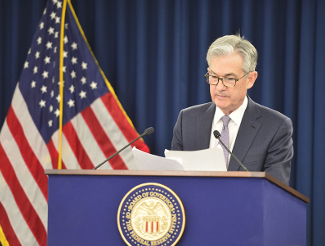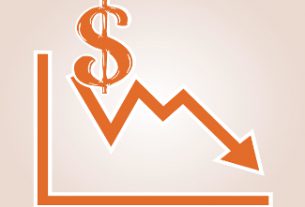In yet more confirmation that monetary policy normalization will never occur, Federal Reserve Chairman Jay Powell stated in his recent testimony before Congress that “low rates are not really a choice anymore.” The mountain of debt incentivized by the past decade of abnormally low interest rates has grown so large that if the Fed were to allow rates to return to market levels, the entire economy would collapse into another financial crisis.
The economy may still collapse into crisis, as at the end of the day unlimited money creation isn’t a panacea. Just look at Weimar Germany for a prime example of that. But no one knows where that tipping point is, just exactly where quantitative easing and lower interest rates start becoming more destructive than they already are. And once that point is reached, it will be too late to stop the impending crisis.
The Fed’s traditional response tool, lowering interest rates, will largely be useless in the face of another financial crisis. Rates are already low, and with the federal funds rate trading at around 1.55% doesn’t leave much room to cut. The Fed has already been cutting interest rates over the past year, and that’s in the face of record-high stock markets. When markets start to crash, lowering interest rates even further won’t do anything to soften the fall.
That means that the Fed will have to rely on quantitative easing to pursue its monetary policy goals. But wait! The Fed is already engaging in quantitative easing, though it hasn’t announced it officially. Its balance sheet has increased over $400 billion since the beginning of September. How much more money will the Fed pump into the system in the event of a cataclysmic shock to markets?
If a 10% increase in a few months isn’t considered QE, what kind of numbers can we expect? A few trillion dollars a year? Monetization of every penny of new US government debt? Purchases of Fortune 500 corporate debt? How much is out there that the Fed can realistically purchase and hold on its balance sheet in order to keep the economy stable? Those are big questions, with not a lot of good answers.
Powell has also stressed his reliance on “forward guidance” in the event of a future crisis. That means the Fed will telegraph to markets what it intends to do, so that markets can price in the effects of Fed intervention in monetary policy. But that allows institutional investors to make money off the Fed’s policies, since they know in advance what the Fed will do, how much money it will inject, etc. In what other industry does the major player tell the whole world in advance what it plans on doing? It’s unbelievable.
After listening to Powell’s testimony, you can’t help but be pessimistic about the future of the economy and the future of markets. It’s clear that we’re facing a 2008-style crisis or worse in the near future, so investors need to be prepared. With every passing day, the case for investing in gold gets stronger and stronger, as markets are now clearly on the verge of a major correction. The question now is, how many investors will heed the warnings and take the necessary steps to protect their investments with gold?
This article was originally posted on Goldco.




